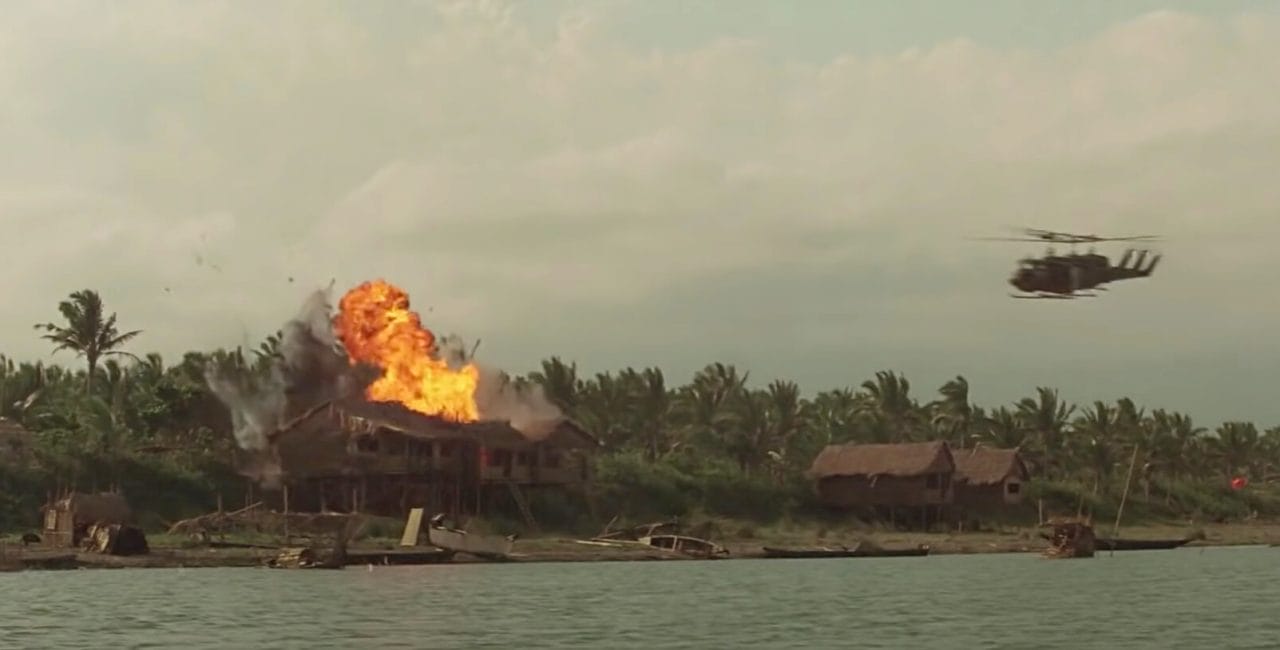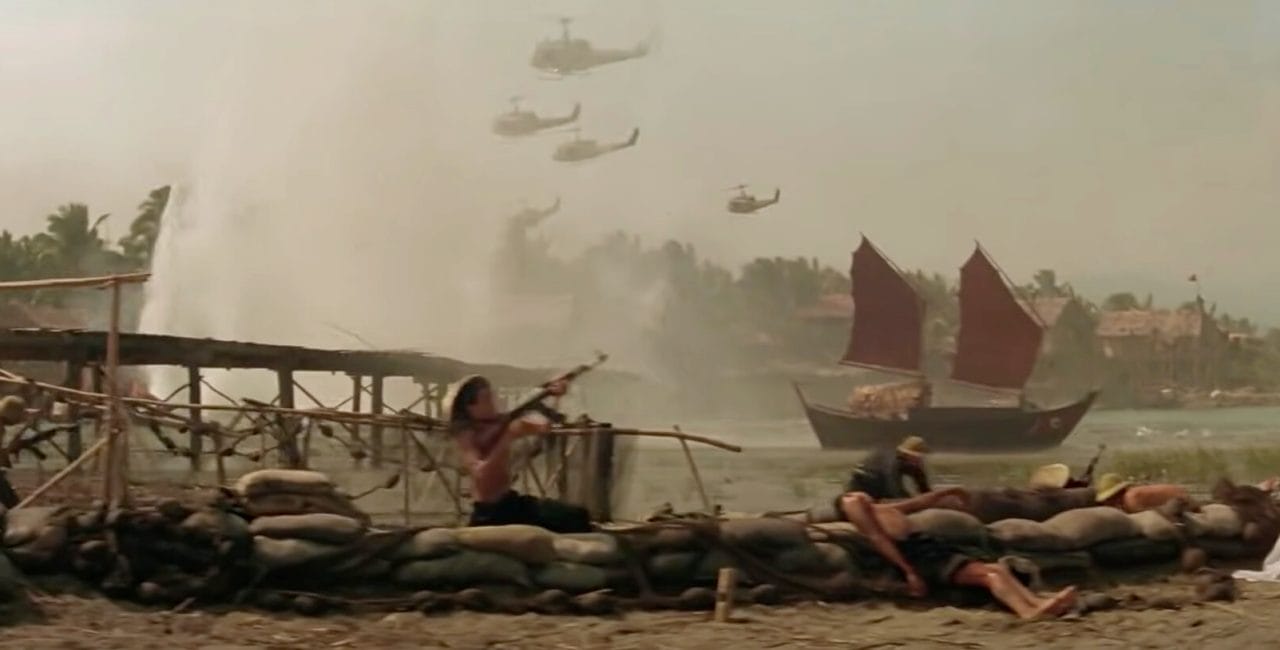Fanspot
Luzon Island

“I love the smell of napalm in the morning.”
Bill Kilgore (Robert Duvall)
In 1969, Francis Ford Coppola read Joseph Conrad’s novella Heart of Darkness, on which Orson Welles had broken his teeth thirty years earlier. The Vietnam War is raging. The director and his friend George Lucas have just founded the company American Zoetrope. Wishing to bring the text to the screen by adapting it to Vietnam, the filmmaker was refused by Warner.
Following the success of the first two parts of The Godfather, he reactivated his project to adapt Joseph Conrad in the mid-1970s. The script, jointly signed by John Milius, Francis Ford Coppola and Michael Herr, a famous war correspondent who served in Vietnam, is validated and the film team takes up residence on the island of Luzon in the Philippines. The place was chosen because of the similarities of its landscapes with those of Vietnam. Filming began on March 20, 1976. It is on the island that the vast majority of the scenes are filmed. Hired to play Willard, the lead role, Harvey Keitel is finally fired after two weeks. The director then calls Martin Sheen. The conditions are extreme, as illustrated by the images shot by Eleanor Coppola during the shooting. These were later compiled in the eloquent documentary Hearts of Darkness: A Filmmaker’s Apocalypse.
Because Francis Ford Coppola plays big and the problems pile up. Under enormous pressure, Martin Sheen, though only 36 years old, suffered a heart attack and had to be replaced by his brother for a while. Marlon Brando for his part, who is found as the imposing colonel Kurtz, shows the greatest nonchalance and arrives on the scene without having read his character or the book.
Francis Ford Coppola also has to deal with a hurricane. This will delay the filming by six weeks. The budget swells inexorably, forcing the director to inject money from his own funds. For him, the risks of bankruptcy are real but he persists. The surfing scene against the backdrop of Wagner, while the war is raging, is shot on the beach at Baler Bay. The river that Willard goes up is the Magdapio River. The filmmaker is forced to rent Philippine army helicopters, paint them in the colors of the U.S. Army and then return them the same evening repainted. These helicopters are also used at night to sometimes shoot down insurgents. Kurtz’s stronghold must, in the scenario, express the threat of this colonel who has become uncontrollable. Rather than fabricating fake bodies, the production manages to obtain real corpses from local morgues. So many proofs of the insane character of this extraordinary shooting, from which everyone almost miraculously came back alive. The film itself has become a legend.
An adaptation of Joseph Conrad’s novel, Heart of Darkness, Apocalypse Now has also gone down in history because of its chaotic genesis. A critically acclaimed film whose success saved Francis Ford Coppola from bankruptcy. It won the Palme d’Or at the Cannes Film Festival in 1979.
The shooting lasted 238 days, or 80 days days longer than initially than initially planned. production plan.
Luzon
The largest island in the Philippines and the fifteenth largest in the world, Luzon is home to half of the country’s total population.
Popular for its mountains and beaches, Luzon is also known for its irrigated terraces on which rice has been cultivated for over two thousand years. Dotted with active volcanoes, including Pinatubo, only 100 kilometers from the capital Manila, the island has a history marked by Spanish colonization. It was also the scene of the Battle of the Philippines during the Second World War. While tourism represents a significant source of income, Luzon also exports bananas, coffee, mangoes and coconuts to the entire world.
The Fantrippers Buying Board

Cult! movies: 100 mythical places of cinema [French Edition]
Since the dawn of cinema, films have invaded the world and highlighted sometimes unexpected places. Every film location has its secrets. The latter are sometimes as exciting as the feature films themselves.
Did you know that the cemetery where the final duel of The Good, the Bad and the Ugly was built from scratch and that no body lies there? Or that the bus ofInto The Wild has been moved to discourage fans from spending the night there? From the story of the construction of The Bridge on the River Kwai to the incredible encounter during the shooting of the last scene ofIndiana Jones and the Last Crusadeembark on an exciting world tour with the greatest stars of the seventh art. Shiver in the real haunted house ofAmityville and discover the terrifying anecdotes of the making ofApocalypse Now in the Philippines. Visit the building of Blade Runner before stopping at Hogwarts and finally landing in Jurassic Parkin the middle of the Hawaiian archipelago. What if we also took you behind the scenes of the making of the Hobbits’ village of Lord of the Rings ?
Produced by a team of pop-culture specialists and enhanced by numerous anecdotes, Cult! movies tells the secrets of the places that made the history of cinema.
Content quality
Interest for fans
Value for money
Discover all the places Apocalypse Now on our map
By Gilles Rolland
Passionné de cinéma, de rock and roll, de séries TV et de littérature. Rédacteur de presse et auteur des livres Le Heavy Metal au cinéma, Paroles de fans Guns N' Roses, Paroles de fans Rammstein et Welcome to my Jungle : 100 albums rock et autres anecdotes dépareillées. Adore également voyager à la recherche des lieux les plus emblématiques de la pop culture.









